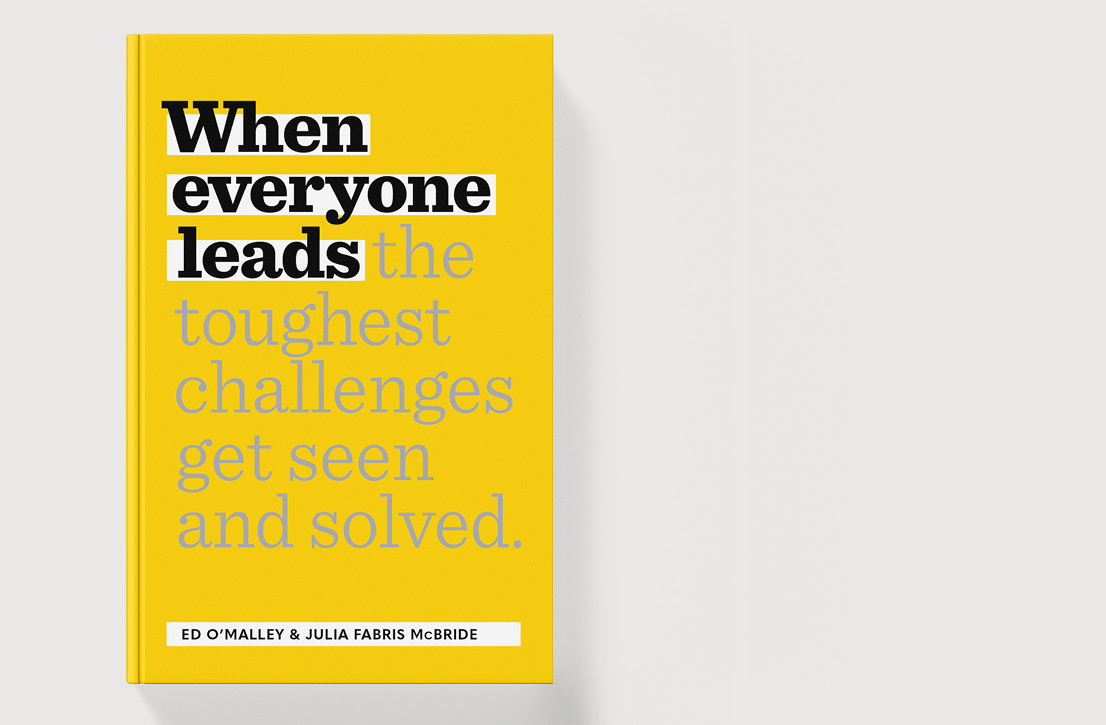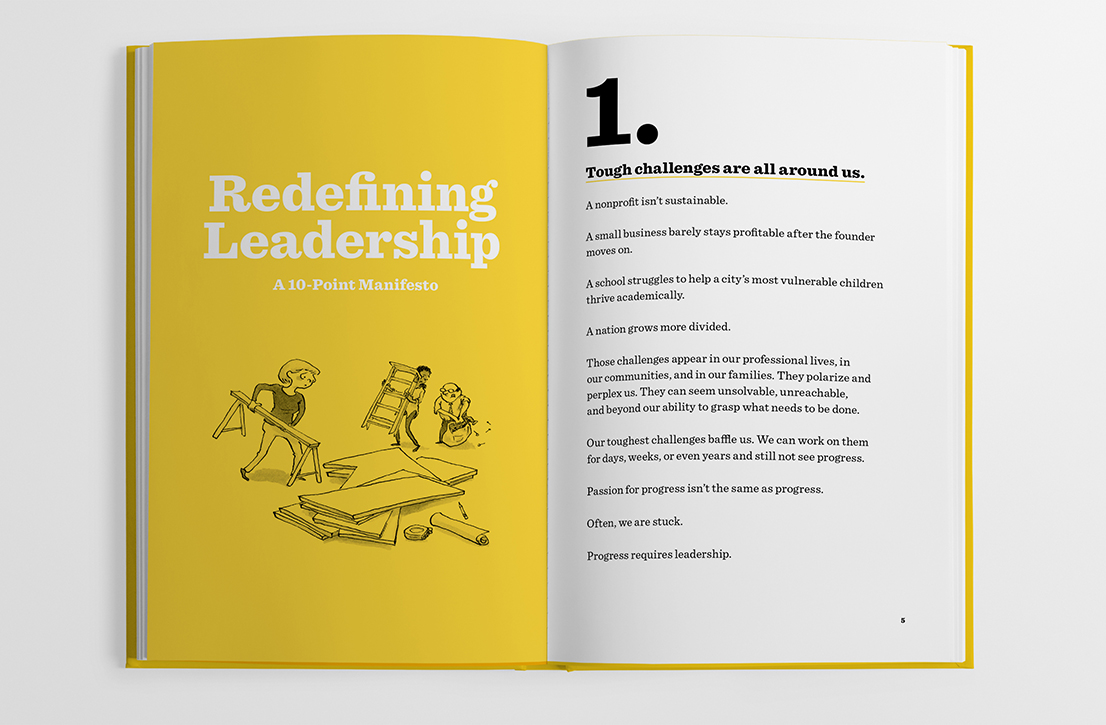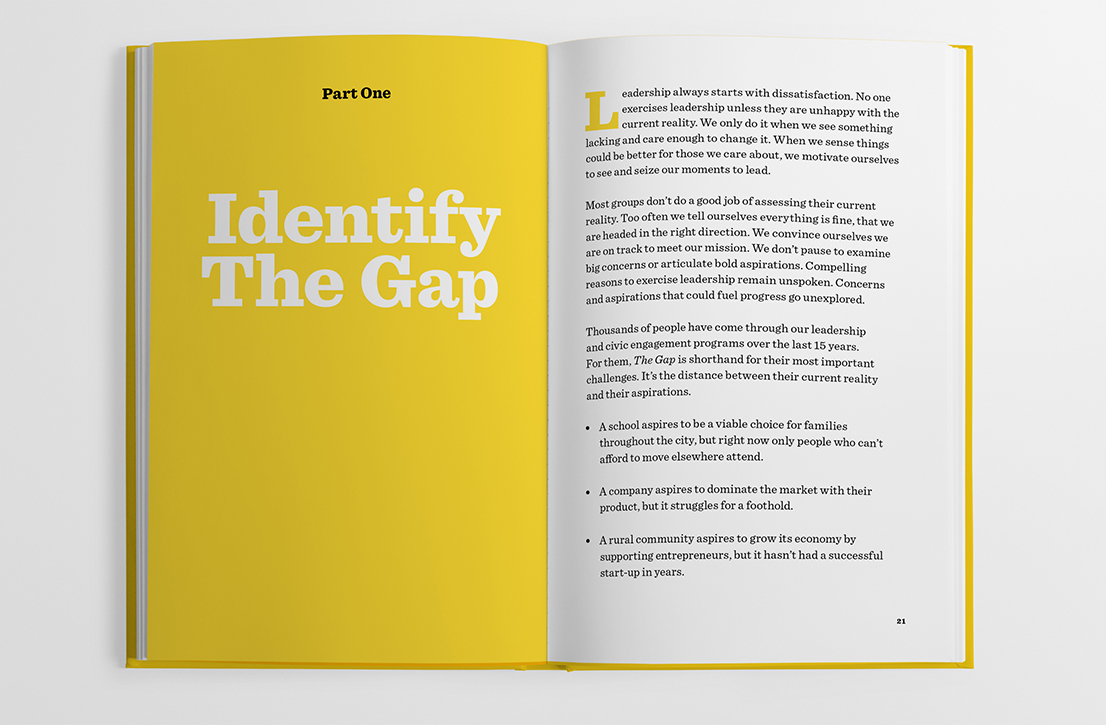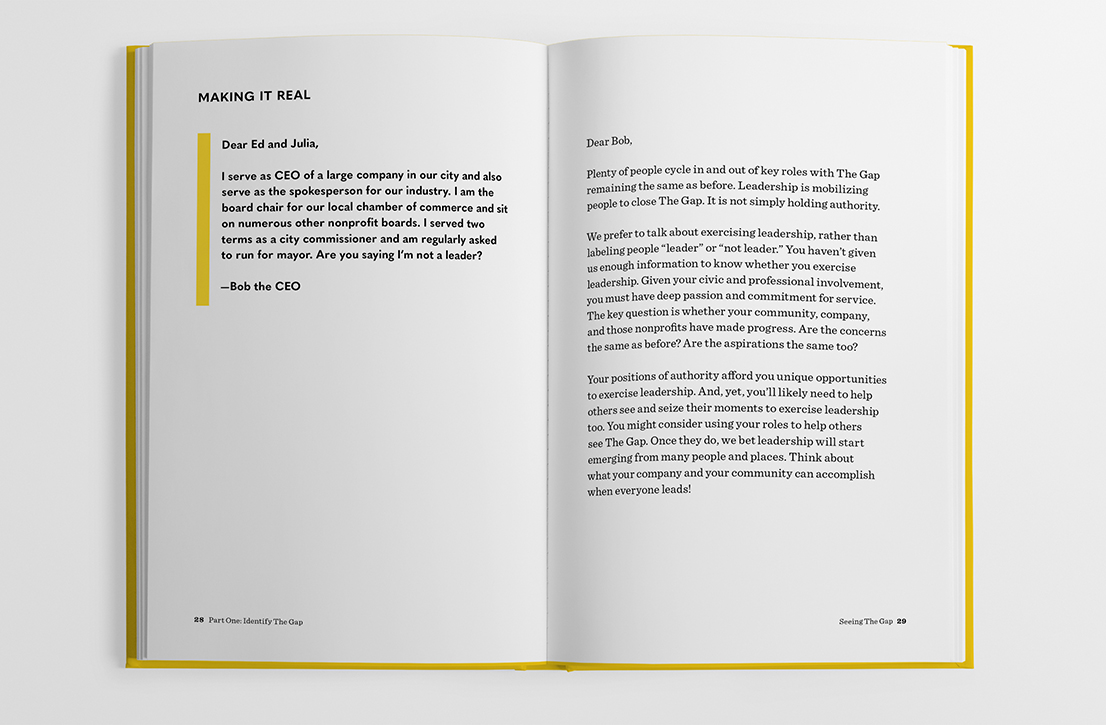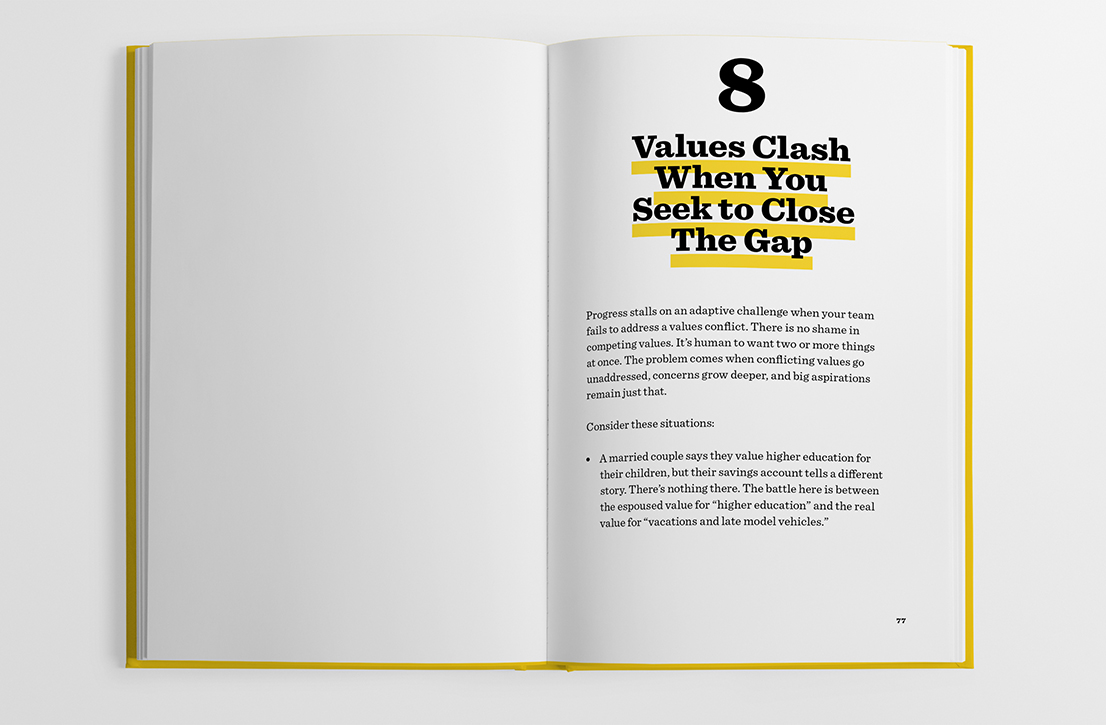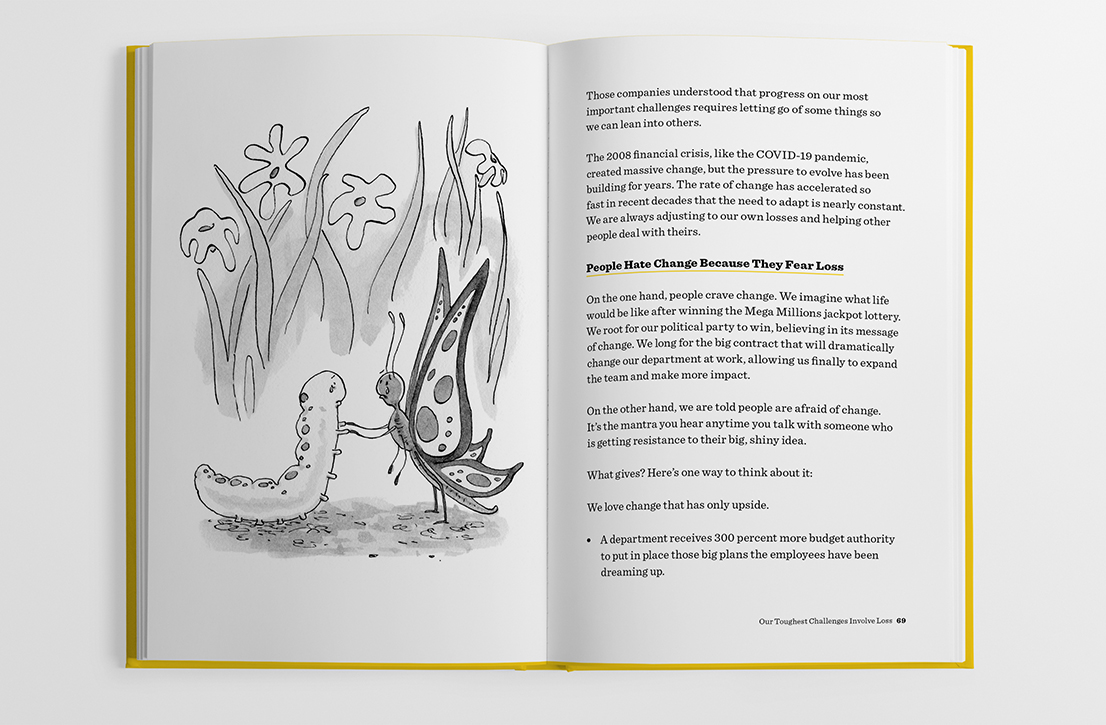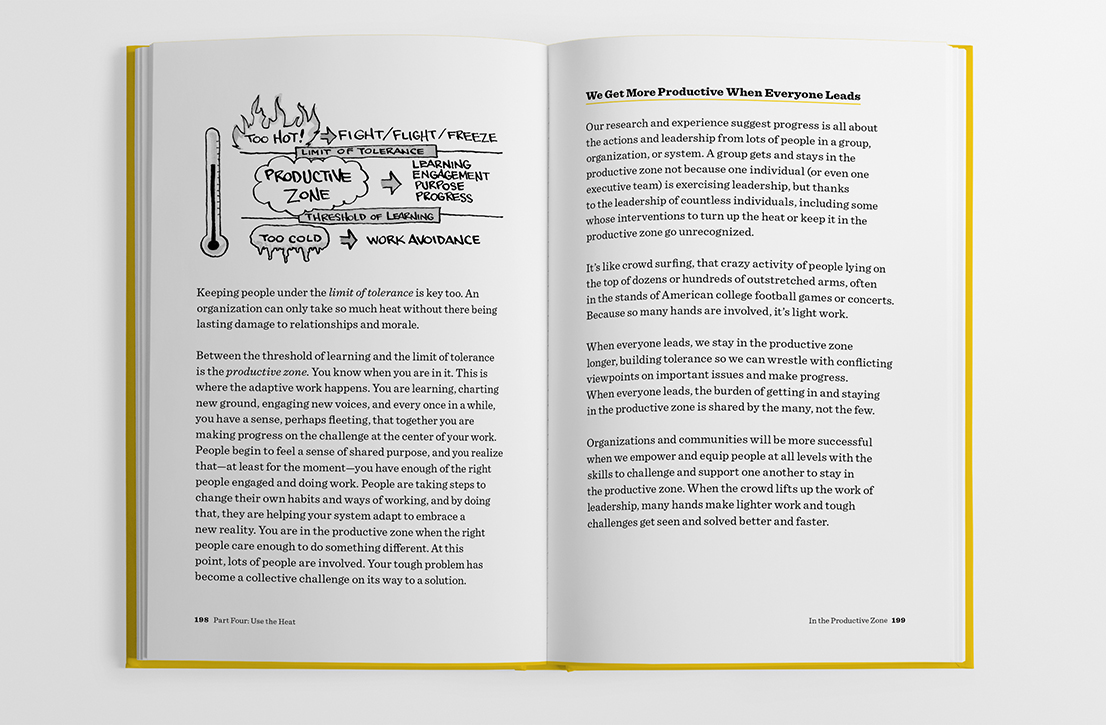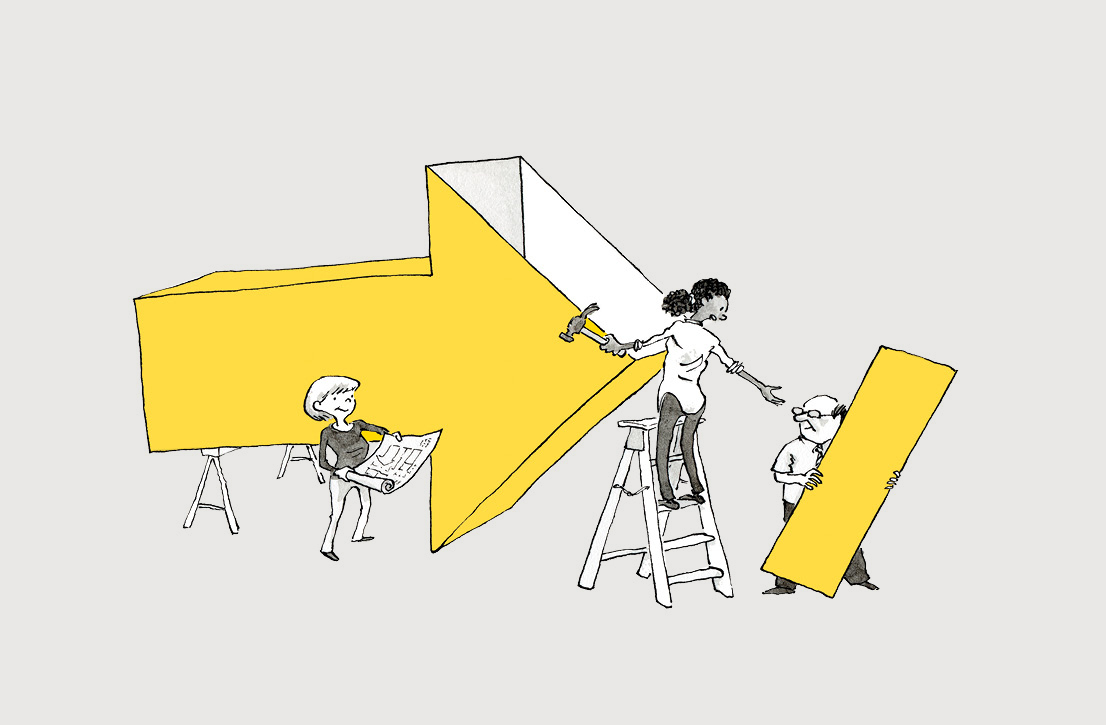When Everyone Leads & Your Leadership Edge
Books to inspire a new definition of leadership.
We have just wrapped up the design direction for a family of leadership books with Bard Press and the Kansas Leadership Center.
When Everyone Leads by Ed O’Malley and Julia Fabris McBride is not about leadership as usual. The opening page states: “You don’t need a title to start leading.” Their view is that leadership is not about job titles and hierarchies, but is an activity about engaging people to see and to solve challenges together. The opening chapter is a manifesto on redefining leadership. It offers a human, inclusive, rewarding, and optimistic view of how people can practice leadership — to make things better in a business, a civic organization, at home, and in our communities.
Leadership emerged in 1955 when Rosa Parks refused to give up her seat on the bus. Leadership emerges whenever a new employee asks a question no one wants to answer. … Leadership has nothing to do with a role. It has everything to do with seeing and seizing moments to help a group move forward.
From When Everyone Leads, Chapter 1
Your Leadership Edge by Ed O’Malley and Amanda Cebula outlines tools and strategies to help people put KLC’s leadership principles into practice. While When Everyone Leads was in development, Your Leadership Edge was updated and repackaged with a new cover to create a recognizable family approach that can also accommodate future titles.
Your Leadership Edge Teacher Companion rounds out the family of resources, providing a clear and engaging guidebook for teaching and coaching their leadership framework. Additionally, we worked with Bard Press on a kit of visual elements to support book launch marketing.
Learn more or get copies of these KLC books.
The authors
Ed O’Malley and Julia Fabris McBride of the Kansas Leadership Center believe that leadership is a competency that can be developed and practiced. And that it’s necessary to do so, if we want to solve challenges in our organizations and communities. They have developed inspiring leadership principles and have evidence gained from training thousands of people. It’s important work because, as they say, we make more progress when everyone leads.
Working with a design-driven publisher
We enjoy collaborating with Bard Press because they are leaders in their niche with a distinct point of view on what they think works in the world of business books. They focus intensively on each book and its author(s), gain a deep understanding of their philosophy and business, who they serve, how their new book can be truly different in its category, how the book contributes to the business, and how it can launch strongly and be a bestseller.
They believe that design contributes to creating a better, bestselling product and for decades have approached the design process differently than many other publishers. With Bard, the design process becomes part of the book development process. Weaving design into the process changes the way a book takes shape.
When we work with Bard Press, we begin concept development early, well before the manuscript is complete, to explore the concept and how it might be conveyed. We develop, test, and iterate design concepts. Sometimes titles or subtitles change, depending on what we explore and learn in the process of design exploration. Together we approach book design almost like software development — with a lot of exploration and testing.
A manuscript is not a book. No one (except a writer, an editor, or maybe an author’s mom) wants to read a long Word or Google doc. The design direction of a book delivers the author’s big idea, makes a concept more clear, helps to differentiate the book from other ideas in the same bookselling category, makes it function well (there are lots of interconnected moving parts and systems in book production, from print to epub), creates an intentional experience for a reader, and can even help the publicity team drum up interest in the book’s launch.
Great design does so many things. In books, it creates distinction for the product in a very crowded marketplace. Great design makes the message more accessible to more people. But most importantly, I believe what Jony Ive says—people deserve beautiful things in their lives.
Todd Sattersten, Publisher, Bard Press
For When Everyone Leads, we wanted the design direction for the book to reflect the incredible human, inclusive, rewarding, and optimistic qualities of the leadership message. To deliver the authors’ call for a new way of operating, reflect their thoughtfulness and intelligence, and invite people to participate. Big and small design decisions help accomplish that. Connecting the title and subtitle into one complete idea on the cover quickly conveys why this way of leading matters. Bright yellow conveys energy and optimism. The typography is welcoming and strong, with a clear hierarchy that guides readers through the book (and also translates to a clear hierarchy for epub).
We also knew that this book would not remain a standalone. We explored systems for color and typography that account for a family of current and future related titles. It was also important that these books convey the KLC brand. KLC had been using imagery by New Yorker cartoonist Pat Byrnes in previous materials. His images help make KLC’s ideas relatable and convey the range of human emotions that are reality when trying to create change in an organization.
What’s true about an iterative design process is also true about the leadership principles in these books:
Leadership is an activity—small actions taken in moments of opportunity. As you start to look around, you learn to see more of those moments, and seize the opportunity in those moments. Most importantly, you can help others see those opportunities too.
From When Everyone Leads

